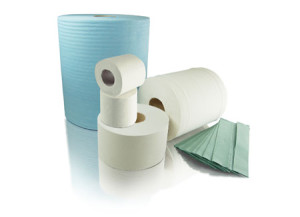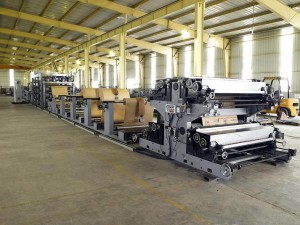How Is Paper Made Step By Step
The base ingredient of the majority of papers is wood, so the first step in paper manufacturing is the harvesting of trees.
Once the trees have been felled and shred down to their trunks, they are transported to a paper mill.
Once they arrive the trunks are fed through a bark-skimming drum in which they are forced to collide and rub together.
This process removes the trunks of all their bark, which while useful in other applications – such as being burned as boiler fuel -is detrimental to creating clean white paper.
In the next stage of the process, the de-barked logs are sent to a massive chipping unit, which breaks them down into small pieces.
The chippings of wood are then fed into large pressure boilers called digesters. These reduce the wood chippings to a gloopy oatmeal-like pulp, which when extracted from the digester rests at a composition of one part fibre to 200 parts water.
The pulp is then deposited onto a high-speed, mesh screen loop, which removes most of the water content and leaves a thin layer of raw paper. This raw paper is pressed and heated in a series of drying cylinders where any remaining traces of moisture are removed.
Finally the paper is treated with a starch solution that seals the surface and helps avoid excessive ink absorption during printing.
Historically paper production has transitioned through three main phases, ranging from the manual and bespoke creation of single small sheets from plant and rag fibres, through larger-scale, water-powered paper mills and on to current fully automated and continuous papermaking facilities.
Today, many new hardback titles are produced from wood-free paper, which is created exclusively from chemical pulp (a process where the lignin is totally separated from the cellulose fibres during processing) as it is not as prone to yellowing as traditional, wood-based pulp paper.
Read also:
The Paper Making Process – How paper is made
How paper is made – material, manufacture, making
Step by Step paper production
 1. Logging – First, wood in industrial quantities is needed, with tree trunks and logs harvested and shorn of their branches.
1. Logging – First, wood in industrial quantities is needed, with tree trunks and logs harvested and shorn of their branches.
2. Stripping – The trunks/logs are then sent through a stripping machine, which quickly and efficiently removes their bark.
3. Chipping – The de-barked wood is then thrown into a chipping unit, which shreds them down into small strips.
4. Pulping – The small strips are deposited into a large pressure boiler (digester), where they are mixed with large quantities of water.
5. De-mulching – The boiler produces paper pulp, which is one part fibre to 200 parts water. Most of the water is removed via a mesh screen loop.
6. Drying – The remaining raw fibrous paper layer is then passed through numerous drying cylinders in order to solidify its structure.
- Read also Making Papyrus Paper
7. Pressing – Pen ultimately, the paper is fed through a pressing unit, which equalizes its surface texture and form.
8. Treating – Finally, the paper is treated with a starch solution that seals the paper’s surface and helps to avoid excessive ink absorption during the printing process.
